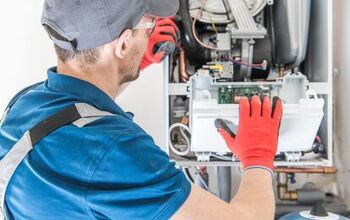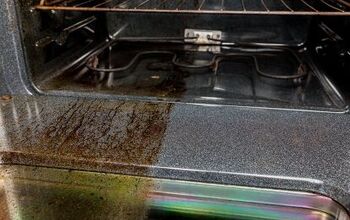How Do I Know If My Diverter Valve Is Bad?

You come home ready for a nice shower. After a few seconds in the shower, you notice something just isn’t right. What could be going on in your shower or bathtub? What could cause your shower to work poorly or not work at all? How do you know if the diverter valve on your tub or shower is bad?
To know if your diverter valve is bad, you should check to see if there is not enough water flow, if water flows from both the showerhead and tup fill spigot at the same time, or if there is irregular water flow. A bad diverter valve can also cause excessive or insufficient amounts of hot water.
The type of diverter valve in your tub or shower is the key to diagnosing the problem. There are several styles of diverter valves. Each type of diverter valve can exhibit one or more of these symptoms. Understanding what to look for is the key to diagnosing a bad diverter valve.
If inadequate water flow is the problem, a bad water pressure regulator may be the cause, not your diverter valve. For more information about water pressure regulators, check out this article.
Do You Need to Hire a Plumber?
Get free, zero-commitment quotes from pro contractors near you.

What Are You Working With? The Types Of Diverter Valves
The first step in diagnosing a bad diverter valve is to determine the type of valve installation. Fortunately, this is easy without tearing out walls or tiles. A look at the visible parts of your shower or tub plumbing will give you the answer.
Tub and shower diverters come in two basic configurations.
- A tub spigot diverter
- A three-valve diverter
Let’s look at each of these types of diverter valves and the problems they can exhibit.
Tub Spigot Diverter – Simple And The Most Common
The tub spigot diverter is probably the most common type of diverter valve found in tub and shower installations. The design itself can vary from manufacturer to manufacturer. You can quickly tell if this is the type of diverter installed on your tub.
If you must close a valve on the spigot of your tub, you are a tub spigot diverter. This valve can be a button top of the spigot that you need to pull or push to send water to the showerhead. Some manufacturers use a ring around the spigot mouth that must be pulled or turned.
Whatever the method for closing the valve, the expected result is the same.
How Does A Tub Spigot Diverter Work?
With water flowing from the spigot when you close the tub spigot valve, water is sent to the showerhead and stops flowing out of the spigot. The water pressure behind the valve keeps it closed.
When the water is turned off, a spring in the tub spigot releases and the tub spigot valve opens. With the valve now open, the water drains out of the showerhead assembly. Draining the showerhead prevents drips from the showerhead and ensures clean, fresh water at the beginning of your next shower.
What Can Go Wrong With A Tub Spigot Diverter?
If you notice any of the following, you may have problems with your tub spigot diverter.
- Water flows from both the spigot and the showerhead.
- The diverter valve doesn’t open when the water flow stops.
- The diverter valve won’t stay closed.
These are all sure signs that you have a problem with the tub spigot valve. These problems are usually due to
- Wear and tear
- Sediment build-up
- Corrosion
How Is A Tub Spigot Valve Repaired?
Whichever one is the cause; the repair is simple and straight forward. The cheapest and easiest method of repairing a bad tub spigot diverter valve is to replace the whole tub spigot assembly.
Most of these tub spigot valve units screw on and screw off the pipe that is behind the wall or tile in your tub. However, if the tub spigot valve has been in place for a long time, it may be so corroded that it is nearly impossible to remove. Trying to force the tub spigot valve to turn can damage the pipes behind the wall leading to more costly repairs.
Do-It-Yourself Or Get A Plumber?
If the tub spigot diverter valve doesn’t loosen easily, the suggestion is to quit. Calling a plumber who has the experience and the right tools to remove a corroded tub spigot valve without damaging the pipes can be much less expensive in the long run.
Three Valve Diverters – A Different Approach
In some older homes, you may find a different approach to the diverter installation. If your tub and shower have three valves on the wall, you have a three-valve diverter. Two of the valves will control the hot water and cold water. The third valve, usually located in the center, controls the flow to the tub spigot and the showerhead.
What Can Go Wrong?
Problems with a three-valve diverter are similar, if not the same, as problems with a tub spigot diverter.
- Water flows from both the showerhead and the tub spigot.
- No water flow from the showerhead
- Either no hot water or no cold water at the showerhead
Any of these conditions is an indication of a broken diverter valve. The problem could be a loose valve knob or handle or a faulty valve. Unfortunately, if the valve is faulty, your fix will usually involve a plumber.
Time To Call The Professionals
Since the valve is part of the plumbing that is inside the wall, the fix for this kind of diverter valve problem is usually beyond the scope of most do-it-yourselfers. In fact, since repairing this type of diverter valve means replacing the valve, some cities require that a licensed plumber do the work.
In many homes, the only access to the valves in the wall is by tearing out the tile or bathtub enclosure. Effecting this repair is not a simple task. Our suggestion is if your three-valve diver system is the problem, you should consider installing an entirely new valve assembly. One of the single handle designs will add an updated touch to your bathroom.
Involving a plumber can be expensive. Learn more about why plumbers rates are expensive here.
Should I Attempt This Project On My Own?
Doing this project on your own is a great idea if you want to get elbows deep into a project. Some DIY projects may seem too easy or superficial for beginners such as painting or setting up a garden. So, if you’re looking to get into something a bit more complex, this would be a great place to start.
However, if you find yourself faced with a situation where you’re unsure about how to proceed, you can always call a friend or family member to help you, who may have a bit more DIY experience than you. Keep in mind that we all start somewhere, and it’s okay to ask for help no matter how experienced you are. This is a learning opportunity.
What If I Don’t Have A Tub? Do I Still Have A Diverter Valve?
If you have a shower with no bathtub in your bathroom, strictly speaking, you don’t have a diverter valve. More than likely, you have a single handle valve that controls the flow of water and the temperature with one lever. Just like a diverter valve, these single lever style valves in a shower can show some of the same problems.
- Water leaks by the valve and drips from the showerhead
- Water flow is diminished or inadequate
- You can’t get enough hot water or cold water for a comfortable shower
How Do Single Handle Shower Valves Work?
These single handle shower valves use a tube within a tube design that allows holes within a center tub to align with the hot and cold water feed lines. These mechanisms are subject to the same sorts of problems as any other valve such as.
- Wear and tear on the valve components as they are moved in and out or turned
- Corrosion from minerals or other substances in your water
- Sediment build-up in and on the valve components
Are Single Handle Valves Hard To Fix?
Fortunately, most of these single lever style shower valves, and even tub valves, can be repaired easily. The valve cores are accessible from the front of the valve. Replacement cores are available in most home improvement centers.
Follow the manufacturer’s instructions for replacing the core in your faucet and it should work like new. Just don’t forget to turn off the water supply to your house before you disassemble the valve.
Do You Need to Hire a Plumber?
Get free, zero-commitment quotes from pro contractors near you.

Diagnosing A Bad Diverter Valve – As Easy As Watching The Water Flow
Diagnosing problems with a diverter valve is often as easy as watching the water flow in your bathtub. If water is coming out of the opening that you expect when you engage the diverter valve, you have a problem.
The scope of the problem depends on the type of diverter valve installed on the system. The remedy can be as easy as replacing a tub spigot, or as involved as replumbing the entire water supply system to the tub and shower.
Related Guides

We are a team of passionate homeowners, home improvement pros, and DIY enthusiasts who enjoy sharing home improvement, housekeeping, decorating, and more with other homeowners! Whether you're looking for a step-by-step guide on fixing an appliance or the cost of installing a fence, we've here to help.
More by Upgraded Home Team



























